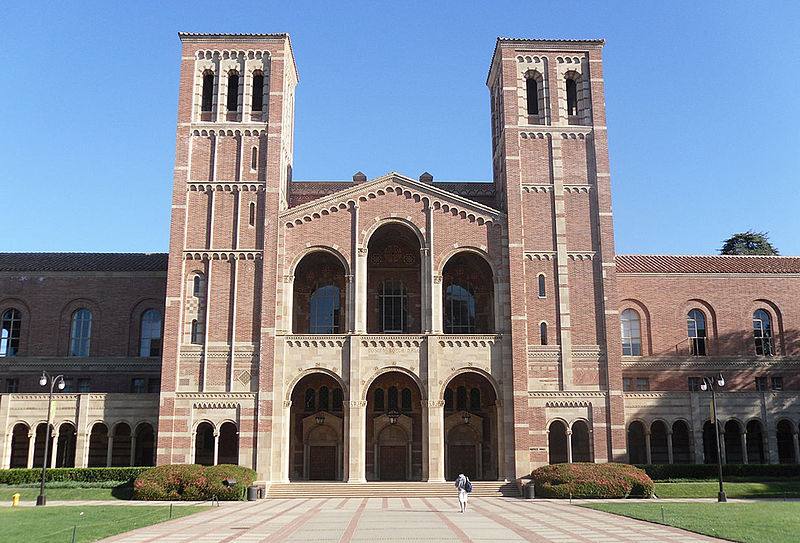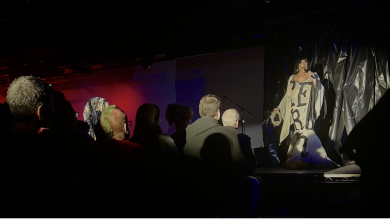Diversity Requirement: A Progressive Step in the Right Direction or a Useless Formality?
The faculty of UCLA College of Letters and Science narrowly approved the diversity requirement proposal with a vote of 332 to 303 on Friday, October 31. While many believe that the diversity requirement is a progressive and necessary action to take, others doubt its efficacy. Members of the FEM staff weighed in on the issue and what it really means for the UCLA campus:
Antoinette Georgy:
UCLA has been in the news many times in the span of the last five years due to racial intolerance and bias (UC Independent Investigation, Attorney General Kamala Harris, & LA Times). This proposal then is crucial to both students’ academic careers and UCLA’s reputation as a top university.
Just last week, The Daily Bruin ran a racially insensitive article regarding easy Halloween costume ideas, including a Dia de los Muertos costume. Last year, students from UCLA’s Law School posted a video entitled “33,” describing their feelings of exclusion on campus since they are among the few Black students who attend UCLA. Also in 2011, a student posted a “rant” video on YouTube, describing her disdain for the Asian population on campus.
With questions of racial inequality constantly being raised, it is time for the administration to take action. The diversity requirement is set up in a way that it is easy for every student of the College of Letters & Science to fulfill.
The opposing side believes that the new course load will cost the school too much money. However, compared to other UC campuses that have enacted the change, benefits outweigh the costs.
I believe that it is more important to do something than to do nothing. I am tired of seeing my school’s name on the news for the wrong reasons. This is our home, and I want everyone to feel welcomed in it.
Jayde Bates:
What does UCLA’s new diversity requirement change? Chances are, little to nothing.
As the course catalog for UCLA’s School of Arts and Architecture (where the requirement is already implemented) describes, “Courses satisfying this requirement consider intergroup dynamics along with such social dimensions as race, ethnicity, gender, socioeconomic background, religion, sexual orientation, age, and disability and are relevant to the understanding of these dynamics in contemporary society and culture in the U.S. and around the world.”
Sounds pretty cool, right? Right. Educating young minds on world issues and social dynamics. It’s not as “revolutionary” or “progressive” as the media is making it seem.
A vast majority of UC schools already have this requirement; it’s nothing new. So why is UCLA all up in arms about it? The amount of media coverage on this topic is extensive—UCLA is being termed the “progressive” school, the acclaimed rebel. While UCLA is diverse and disproportionately liberal, all this media babble just makes us seem like that one wannabe hipster who tries just a little too hard to be different.
While this requirement is incredibly important, chances are students have already fulfilled it simply by taking their general education classes. In fact, most students would actually need to try quite hard not to fill this requirement. The only thing this requirement does is simply force those few kids who have been avoiding these classes to take them.
So everyone, calm yourselves.
Iman Hussain:
The hope with this new requirement is to provide students the ability to understand the perspectives of others whose views, backgrounds, and experiences may differ from their own. It is important to teach students about diversity so they can better accept and respect those around them.
However, I am skeptical on whether or not it will truly teach these values to the UCLA student body. If the requirement can be incorporated into classes of all majors, then it could have the desired effect. The requirement will only benefit the students if the information is presented in a way that would be of interest to all of them.
If major and minor courses for any degree can provide the diversity requirement in at least one of their mandatory courses, the impact will be greater. The fear is that this will become just another required General Education course that most students try to pass with minimal effort.
If passed, UCLA will be the last UC to implement a diversity initiative—ironic, considering it is in Los Angeles, one of the most diverse counties in the country. Over the past few years, however, there have been a number of racially charged instances that have occurred on the UCLA campus.
The importance of a diversity requirement cannot be understated, but its benefits will only occur if all students from all majors are provided classes tailored to their interests while incorporating diversity to some degree, as well.
Izabella Tufenkjian:
Six UCLA faculty members voiced their reasons for opposing the new potential requirements for incoming students.
Among many reasons, a unified opposition revolves around taking focus away from major coursework and creating a delay in graduating in a timely manner.
But shouldn’t that be an issue for the students to take under consideration as opposed to the staff? And what does this say about UCLA’s standing General Education requirements?
One could say that it will offer relief from intense major coursework and develop student interest in other fields like many General Education courses do now.
So maybe we need to think about the long run and how, like many other things, the diversity requirement won’t seem like a burden when “imposed.”
Camila Gelmini:
The Diversity Requirement, although indicative of changing sentiments in the more conservative groups on campus towards more progressive ideals, will do little to nothing to change the views of students or the student culture, for better or for worse.
Since the actual catalog of classes that fulfills the diversity requirement overlaps with many GEs, most students are already taking these classes. The number of students affected by this initiative, if it passes, would therefore be very small.
Tina Lawson:
On February 24, 2014, Chancellor Gene D. Block warned on his update page that,
“conversations about race can be very difficult. They are inevitably emotional […] But we cannot be afraid to have these conversations, because they are so critically important to our university and to society. And if we cannot have productive discussions about race here, on a campus with the world’s thought leaders and with students committed to knowledge and inquiry, then where can we?”
It was a telling memo, showing the behind-the-scenes state of UCLA’s politics in the face of anti-diversity claims: the new diversity requirement that passed on Friday has been in the works, at least subconsciously, for some time.
Since 2002, all UC campuses have fallen behind on accepting minorities as students; many have implemented diversity requirements or equivalent programs to partly address this issue.
UC Berkeley started a $16 million dollar graduate program called “Equity, Inclusion, and Diversity” which includes mentoring, outreach, and academic/financial support (there is also a division for undergraduates). UC San Diego also has their own office for “Equity, Inclusion, and Diversity”. Many other UC campuses have adopted similar philosophies focused on undergraduate diversity through general education requirements.
This leaves UCLA, as Chancellor Gene D. Block states dismally in the same February 24th update, “the only UC campus that does not have one.”
Aside from the obvious answer to the question, “Do we need a diversity requirement?” it should also be noted that the College of Letters and Science already has a variety of courses that are diverse—students do take interesting and engaging classes on subjects from LGBT and gender studies to in-depth courses on racial, cultural, religious, and international subjects. Many of these classes are cross-listed and fulfill other majors’ requirements, both in GE and Upper-Divisions.
If it is this easy to have access to diversity courses, why does UCLA need a requirement? The answer lies in the fact that even though student have access, they are not necessarily encouraged to take those possibly unfamiliar courses. This requirement would prompt students to step out of their comfort zones and be educated through their chosen major.
This is more of a symbolic change and statement rather than an actual overhaul on the part of UCLA: think of it more as a last word on the question “Is UCLA diverse?” rather than a move that would hike up tuitions and student costs.
Chancellor Gene D. Block has good intentions for pushing this diversity campaign and with good reason: since we live in such a diverse county as Los Angeles, it makes sense to increase exposure to those differences that exist among us and to learn about them in tolerant, educated ways.
It can only do good to push a student to pick between a course that could give them a fresh perspective as opposed to a course that does not challenge their current thinking.
Students go to college to expand their minds and this diversity requirement would do just that.
Giselle Persak:
While some believe that getting the faculty on board was the toughest obstacle, both the Academic Senate’s Undergraduate Council and Academic Senate’s Legislative Assembly must now approve the pending proposal.
The need for a diversity requirement was voiced more than 25 years ago and has been turned down three times. With UCLA being one of the few UC campuses without this requirement, the question is not ‘when will the requirement be passed?’ but instead ‘why has it not been passed yet?’
While opponents have voiced their concerns that the requirement will add further burden to student’s already strenuous course load, in a letter from UCLA’s Committee on Diversity and Equal Opportunity, the faculty wrote, “This proposal will only enrich, not detract from, our current teaching and research environment.”
It has been proposed that there will be classes that fulfill the requirement within most majors, thus offering enrichment within many areas of study instead of demanding the class outside of student majors.
While many are viewing these classes as an additional burden, students and faculty alike should look at the change as an opportunity to widen their scope of understanding. The goal is not to direct students to think one way or another but rather to encourage them to evaluate their tolerance. The goal is not to reconcile debate but instead to encourage it.
Shirley Kawafuchi:
The newly formed College Diversity Initiative Committee, which comprises of six faculty members from a variety of disciplines, was tasked with ironing out the details of the proposal so that it would be attractive to students, faculty, and administrators.
While the efforts of the committee are to be commended, and the diversity initiative remains extremely well thought out, my main concern is for the allocation and general availability of funds for the diversity initiative.
According to the Committee’s report, the sum initial investment for the project totals $545,500 and the recurring costs total $72,500 per year. The report states that the Committee “requests funds be made available for the initiative,” but does not go into detail as to where these funds would come from. It remains to be seen whether or not faculty salaries or student fees will be affected. The change would also impose on faculty time since they would be required to attend diversity workshops. Estimated costs for these workshops are $20,000 in the first year and $10,000 in the years following.
The committee does have a grand view for UCLA, though: inviting experts from around the world in diversity studies to give lectures; supporting doctoral candidates and paying them a stipend to teach at least one course per quarter; and holding a biannual symposium on campus focused on the impacts of teaching diversity.
Brittany Hewitt:
After three failed attempts, is this the right move for UCLA in terms of ensuring a culturally appreciative student body or does this merely create another box to check off in the realm of undergraduate requirements? I think this is a great first step.
The Diversity Bill requires a passing grade in a single four-unit course that directly addresses two populations in an analytical setting. A harmless change, considering the majority of GE classes are already structured to do just this. Even transfer students can look to their prior courses and easily select a lower-division class that discusses a specific group of people in order to fulfill this large-scale initiative in seconds.
So how effective is this change?
Whether you are studying to become an engineer or a lawyer, appreciation of other cultures and understanding their place in the world we will be stepping into in just a few years is an essential aspect of education. The UCLA Diversity Bill seems to be an excellent way to encourage all students to begin thinking in this manner about the world.
UCLA still has a long way to go, however, before fully incorporating the diversity conversation into its daily bustle. Enacting this policy would entail only 85% of UCLA students, the College of Arts and Sciences, to take courses broadening their appreciation of minority issues.
The UCLA Diversity act should be well received by a school desiring to structurally rework its curriculum without bursting the university’s pockets. UCLA prides itself on its diverse student body and well-rounded education, molding a student into a global game-changer. Publicly and explicitly restructuring the old curriculum just might be the perfect milestone for solidifying a diverse student body population.





